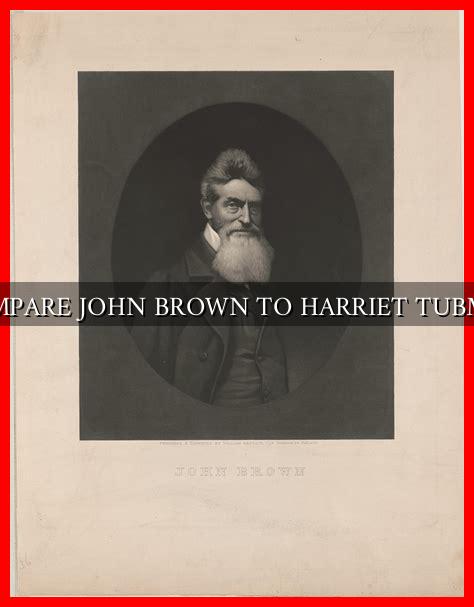-
Table of Contents
Comparing John Brown to Harriet Tubman
When discussing the history of abolitionism and the fight against slavery in the United States, two names that often come to mind are John Brown and Harriet Tubman. Both individuals played crucial roles in the movement to end slavery, but their approaches and methods were vastly different. In this article, we will compare and contrast John Brown and Harriet Tubman, exploring their backgrounds, actions, and legacies.
Background
John Brown was born in 1800 in Connecticut and grew up in a devoutly religious family. He was deeply influenced by his father’s anti-slavery beliefs and became an ardent abolitionist himself. Brown believed that slavery was a sin that needed to be eradicated by any means necessary.
Harriet Tubman, on the other hand, was born into slavery in Maryland around 1822.
. She escaped from bondage in 1849 and became one of the most famous conductors of the Underground Railroad, a network of safe houses and secret routes that helped enslaved people escape to freedom.
Actions
John Brown is best known for his raid on the federal arsenal at Harpers Ferry, Virginia, in 1859. Brown and his followers seized the arsenal in an attempt to arm enslaved people and spark a rebellion against slaveholders. The raid was unsuccessful, and Brown was captured, tried, and executed for treason.
Harriet Tubman, on the other hand, made numerous trips back to the South to lead enslaved people to freedom. She personally guided over 300 individuals to safety, risking her life to help others escape the horrors of slavery. Tubman’s bravery and determination made her a legendary figure in the abolitionist movement.
Legacies
John Brown’s raid on Harpers Ferry was a turning point in the lead-up to the Civil War. While Brown’s methods were controversial and violent, his actions galvanized the abolitionist movement and brought the issue of slavery to the forefront of national debate. Brown’s willingness to sacrifice everything for his beliefs inspired others to take a stand against injustice.
Harriet Tubman’s legacy is one of courage, compassion, and resilience. She not only helped enslaved people escape to freedom but also served as a spy, nurse, and scout for the Union Army during the Civil War. Tubman’s tireless efforts to fight for freedom and equality have earned her a place in history as one of the most influential figures in the struggle against slavery.
Conclusion
In conclusion, while John Brown and Harriet Tubman both fought against slavery, their methods and approaches were vastly different. Brown’s raid on Harpers Ferry was a bold but ultimately unsuccessful attempt to spark a rebellion, while Tubman’s work on the Underground Railroad saved hundreds of lives and helped pave the way for the abolition of slavery. Both individuals left lasting legacies that continue to inspire and educate people today.
For further reading on the lives of John Brown and Harriet Tubman, check out these resources:





